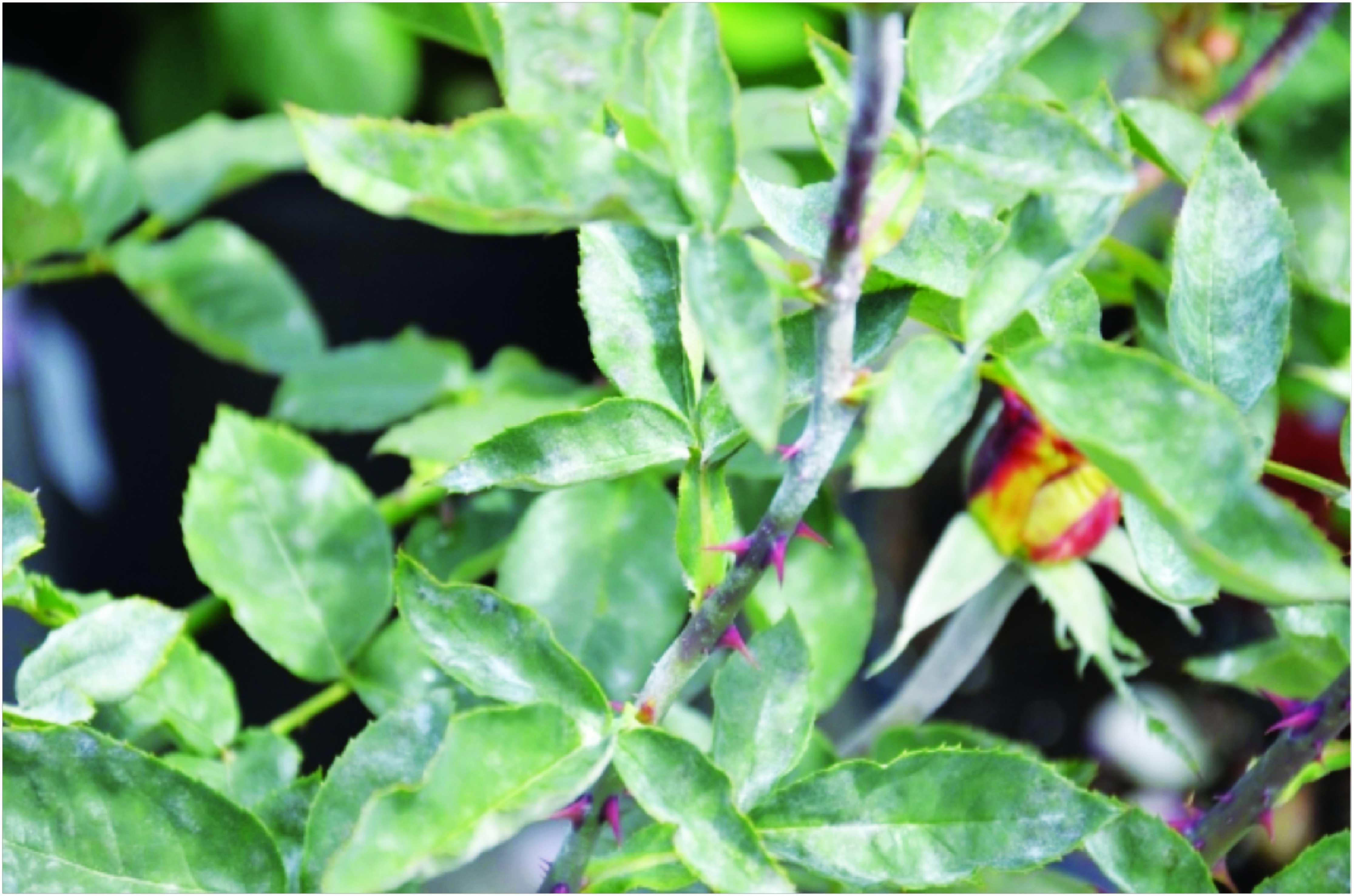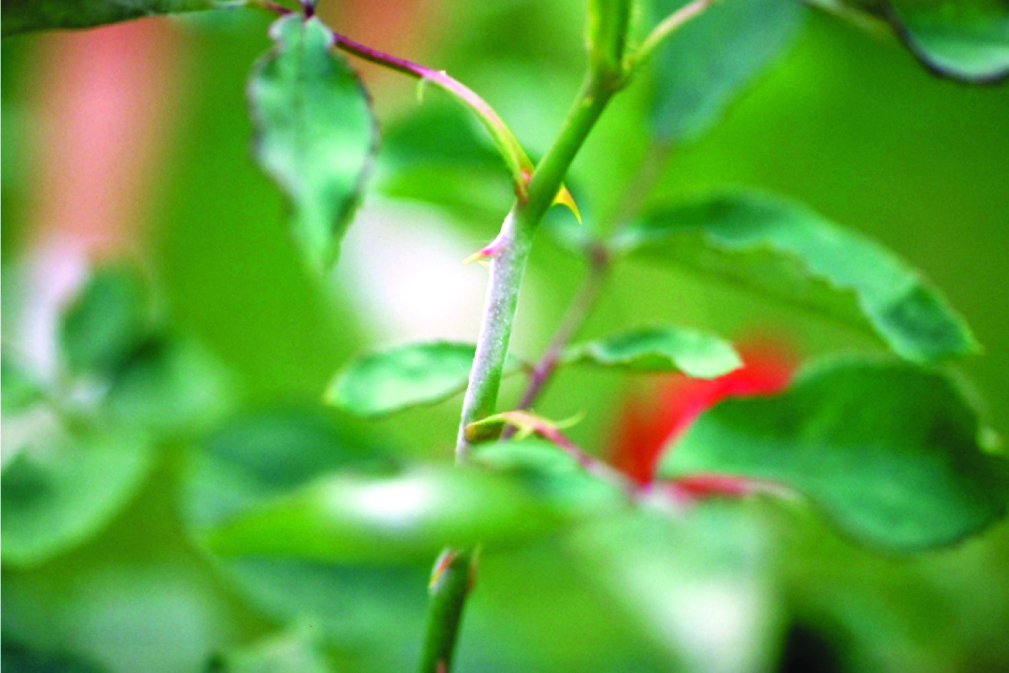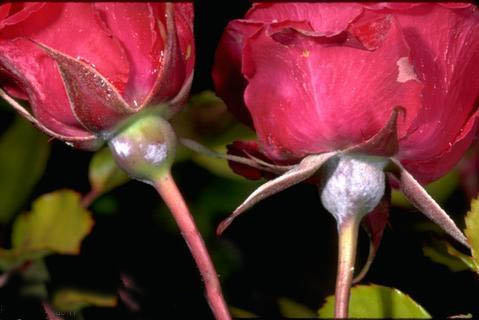
It’s uncommon to see scholars, researchers, and growers gathered together, but a few years ago, that changed.
This rare event was sparked by the significant economic impact of powdery mildew in rose cultivation.
Dr. Maina Muiru, a Senior Lecturer in the Department of Plant Science and Crop Protection at the University of Nairobi, stood before the audience in a room that was filled with anticipation. He walked growers through the critical economic implications of powdery mildew in ornamental crops, covering everything from the disease symptoms to its aetiology, epidemiology, and management strategies.
Dr. Muiru emphasized the challenges posed by powdery mildew, stating, “One of the most significant constraints in rose production is powdery mildew. Moreover, its limited control options make it an economically significant disease, as control efforts can be costly and lead to considerable production losses.” The audience including growers and various stakeholders listened intently, absorbing the vital information he presented. He went on to explain, “Powdery mildew is found globally, and its economic effects stem from diminished flower production and the aesthetic decline associated with fewer and lower-quality blooms. Understanding the biology, ecology, and epidemiology of the pathogen, along with the characteristics of the host and the overall pathosystem, is crucial for effective disease management.”
Symptoms of Powdery Mildew
The symptoms of powdery mildew can differ based on the host species, the pathogen involved, environmental factors like temperature and humidity, as well as the age of the plant tissue at the time of infection. Initially, small white powdery spots become visible on the surface of affected plant tissues.

These spots might remain as distinct colonies, or the fungus may spread extensively across the affected organ. If the fungus has a sexual stage, it can produce cleistothecia, which appear as tiny black specks within the fungal colonies. Young leaves may exhibit a color change from pale green to yellow before becoming necrotic, giving them a scorched appearance. Infected leaves can also become crinkled and distorted, and severely infected young shoots may wither, experience dieback, and ultimately perish. Severe infections can lead to defoliation, further impacting the health of the plant.
Spread
Mature conidia are released from conidiophores when relative humidity drops quickly. These spores are carried by the wind and dispersed by air currents. They can also hitch a ride on people’s hands or clothing, tools like pruning shears, or through infected plants brought in from other farms. Additionally, ascospores are ejected into the air and can be carried by the wind.
Epidemiology
When the windblown conidia land on a vulnerable host, they germinate and develop hyphae that spread across the plant’s surface. What sets powdery fungi apart is their ability to germinate without needing a water film on the leaves; in fact, free water can inhibit this process. They can start germinating even on dry surfaces when humidity is low, at levels as low as 20%. If conditions are right, infection can occur within five to seven hours, and a new batch of conidia can form within five days.
Warm, dry, and cloudy conditions are ideal for the development of this disease. Cloudy weather protects the fungus from damaging ultraviolet radiation, making shaded plants more susceptible than those in sunlight. Conversely, frequent wetness on leaves hinders the formation and spread of conidia.

In milder climates that don’t have a winter dormancy, powdery mildew fungi can stay active throughout the year. In regions with colder seasons, they survive the winter as dormant mycelium in buds or on shoot tips and reemerge as the weather warms up. Additionally, they can persist as cleistothecia, releasing windblown ascospores to start new infections.
Management
Managing powdery mildew requires consistent monitoring, as outbreaks can escalate quickly from low levels of infection. Here are some effective practices to minimize severe powdery mildew outbreaks:
Growers should avoid introducing infected plants or propagation materials to their farms and keep new arrivals isolated until they are confirmed pest- and disease-free. It’s essential to reduce humidity around the foliage by ensuring good air circulation and adjusting nutrition to prevent overly lush growth. Because powdery mildew fungi can live in dormant buds and shoots, it’s important to prune heavily infected materials before applying fungicides. Additionally, opting for varieties resistant to this disease can be a smart strategy. However, growers should be aware that new races or strains might emerge in response to the use of specific resistance genes for management.
As most of the fungus resides on the plant’s surface, powdery mildew can be effectively managed with fungicides. There are many options available, including protectants that prevent the germination of conidia and ascospores, and curative or eradication products that target existing powdery mildew colonies.
